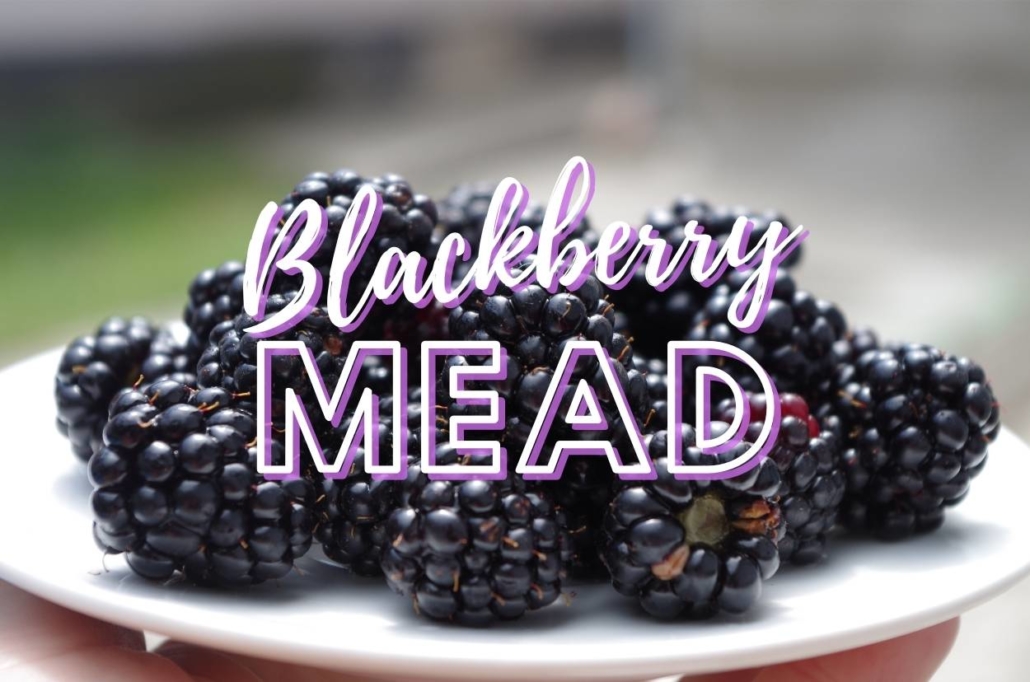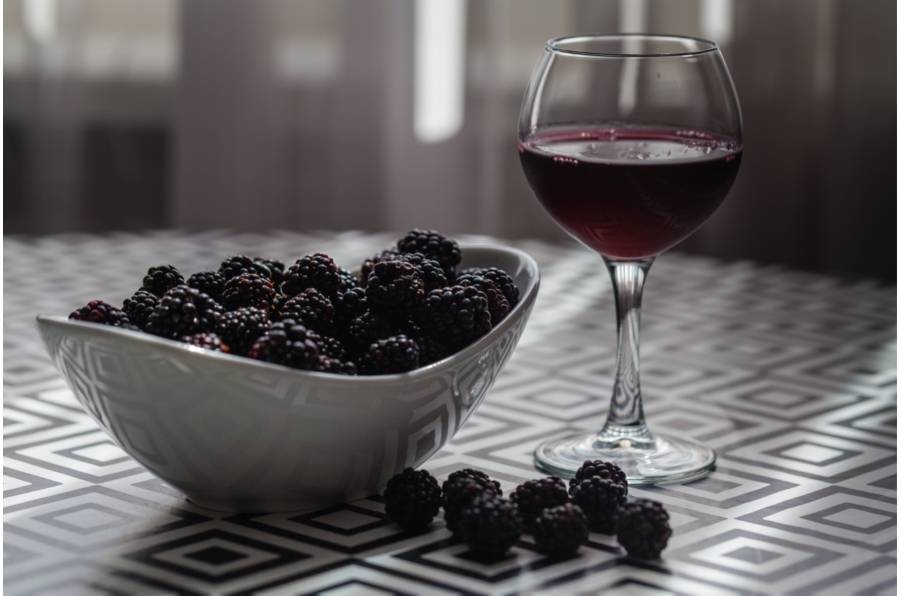Blackberry Mead – The Perfect Berry Melomel

Blackberry mead or melomel is one of my favourites and has all the qualities of a blackberry wine but the added complexity of the honey. The mead finishes a dark ruby red and makes use of the abundant blackberries that grow wild all around where I live in the UK. You could also go to a pick your own farm if they don’t grow in your local area.
Table of Contents
Blackberry Melomel
Once you start making fruit meads also called melomels like this blackberry mead you open up a whole world of possibilities.
Fruit meads are referred to as melomels and as you can imagine pretty much any fruit or combination of fruits is on the table.
Blackberry is a great fruit to use in a Melomel because the dark skins, tannins and acidity all work well in wine.
Sometimes you use fruit in mead or wine and the fresh fruit flavour doesn’t translate that well into the finished drink. Blackberries tend to retain most of the character we know when eaten fresh so blackberry mead is a great choice.
Balancing The Blackberry Melomel
Like in a traditional mead without fruit we still need to use additives such as yeast nutrients, acid and tannin.
We also need to utilise some additives to break down the blackberries. Pectic enzyme will break down the structure in the fruit and help extract the maximum amount of juice and flavour. Without pectic enzymes when using fruit in a mead you may have trouble with haze.
Pectin in fruit like blackberries may cause a haze that cannot be cleared with any other wine finings. Pectin is what causes jam and jellies to set so using enzymes is a simple way to completely break down the pectin and avoid any issues later on.
To balance the flavour we can also utilise tannin and mixed acid like we would in fruit wine. Tannin adds astringency and a bite to the mead and acid adds a brightness that would otherwise leave you with a flat and flabby finished mead.
With tannin and acid, we can add them at the start of the process but also at the end of fermentation after sampling the wine so it is best to add a little to start with the knowledge we can add more to balance the blackberry mead later on.

Fermenting The Mead With The Blackberries
From what I see other mead makers doing there is some variance at which point brewers choose to add the fruit to the mead.
Some brewers add the fruit after primary fermentation with the idea that vigorous fermentation will drive off delicate and volatile flavours. Basically, fermenting the honey part of the mead and then adding the fruit later.
Other brewers like me add the fruit with the honey from the very start of fermentation. It makes complete sense to me to have all the fermentables in the mead from the start so the yeast can break down the fruit and extract the juice and flavour from the beginning.
I suggest for ease and lack of hassle to prepare the mead with the honey and the fruit together and with this blackberry mead, you won’t be disappointed.
Blackberry Mead Recipe
The following recipe will produce a gallon of blackberry melomel. It is a good idea to know the volume of your fermenter (such as having measurements on the side) to ensure you top up with the correct amount of water.
The alcohol content of this mead will be around 12-13% ABV depending on the sugar content of the fruit.
What You’ll Need To Make Blackberry Mead – Makes 1 gallon / 4.5 litres
- Small Fermenting Bucket
- Demijohn
- Syphon
- Fine Straining Bag
- Potato Masher
- Airlock & Bung
Blackberry Mead Ingredients
- 1.3kg Blackberries
- 1.4kg Honey
- 3 litres boiled and cooled water
- Zest 1/2 Lemon
- 1 tsp Acid Blend
- 1/8 tsp Wine Tannin
- 1 tsp Pectic Enzyme
- 1 tsp Yeast Nutrient
- 1 Campden Tablet
- 1 Sachet Wine Yeast
Blackberry Melomel Method
In a sanitised fermenting bucket secure the straining bag and add the blackberries to the straining bag. Use a clean masher to break down the blackberries slightly and begin extracting the juice. Add the lemon zest and secure the bag.
Add the honey to the fermenter and then add enough of the boiled and cooled water to make up 4.5 litres. Stir with a sanitised spoon to combine the honey thoroughly and then add the acid, tannin, nutrient and Campden tablet. Take a hydrometer reading to get a gravity to calculate the ABV of the finished mead. Cover the fermenter and leave overnight.
The next day, add the pectic enzyme, stir and then sprinkle the yeast onto the surface of the must. Cover and secure an airlock then allow primary fermentation to begin.
After 24 – 72 hours fermentation will start. Leave to ferment for around 7 days before removing the straining bag with the remaining fruit and letting drain before discarding. Rack the mead to a sanitised demijohn and secure with a bung and airlock.
Leave the blackberry melomel to condition in the demijohn for 2 – 3 months before racking to another sanitised demijohn and leaving for around 4 – 6 months. Take a hydrometer reading in this period to get the finishing gravity.
After conditioning for up to 9 months, you can sample the mead and adjust it with acid and tannin if necessary before bottling. I find this blackberry mead to be good as it is but you can consider back sweetening the blackberry mead using this guide should you prefer a sweeter mead.
Bottle and set aside for as long as you can bear. This blackberry mead will happily sit in bottles for a couple of years getting better all the time.




I’ve taken a liking to drinking fruity beers and berry melomels are just my favorite drink right now. Looking forward to brewing my own batch sometime soon